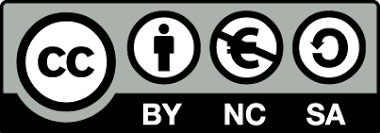Abstract
Background and Rationale: Care for patients receiving emergency treatment services for
ischemic stroke (Stroke Fast Track) has been allocated funding from the National Health
Security Fund to ensure access to healthcare for those in need. Effective coverage is therefore
an important tool for evaluating universal health coverage and the health service system.
Research Objectives: 1) To study the current situation of service provision; 2) To study
effective coverage; and 3) To develop policy recommendations for improving the service
system for ischemic stroke patients receiving emergency treatment services (Stroke Fast
Track).
Research Methodology: This mixed-methods research (provider perspective) consists of
three stages. Stage 1: Study the service provision situation by purposively selecting areas in
the Phetchaburi, Roi Et, Krabi, and Pattani provinces (8 areas). The informants were 64
network members involved in the Stroke Fast Track service delivery, using open-ended and
semi-structured interviews and service provision record forms. Qualitative data were analyzed
by content analysis, while quantitative data were analyzed descriptively and presented as
numbers and percentages. Stage 2: Study effective coverage retrospectively (Ex post
approach) using data from hospitals and the National Health Security Office (NHSO) from
2019–2023. The patient data records were analyzed based on 1) the population in need of
health services (Need), 2) the population receiving necessary health services (Use), 3) the
population benefiting from health services (Quality), 4) those aware of health needs and
using health services (Crude Coverage), and 5) those benefiting from health services (Effective
Coverage). Stage 3: Develop policy recommendations through expert meetings and content
analysis. Research findings were presented descriptively.
Findings:
1) Service Provision: The main-contractor hospitals have the capacity to register as
stroke service providers at different times. From 2019 – 2023, CT scan machines and
recombinant tissue Plasminogen Activator (rtPA) medications were available only in the maincontractor hospitals. In 2023, affiliated sub-contractor hospitals also began providing these
services. The data system showed diversity in data recording, with some records kept on
paper or in non-interlinked databases. Gaps were found in the data collection process, such
as missing of determination for Stroke Fast Track, 4.5-hour window, and the rtPA medication.
2) An analysis of data from a hospital-based study during the fiscal years 2019 - 2023
revealed that there were 24,191 stroke patients. Of these, 31.96% entered the stroke fasttrack program, and among patients with brain tissue death due to ischemia, 59.86% entered
the stroke fast-track. When following up on the administration of rtPA in the group of patients
with brain tissue death due to ischemia, it was found that 35.91% received rtPA, and the
survival rate for those who received rtPA was 91.82%. This may be because stroke patients
with stenosis or occlusion who did not receive rtPA generally had mild symptoms and lower
health necessity, resulting in fewer health services utilized (Crude coverage). For patients with
cerebrovascular diseases or cerebral infarction who received rtPA in the stroke fast-track
group, the coverage rate in the cerebrovascular disease group was 6.87%, and in the cerebral
infarction group, it was 35.91%. Regarding the health benefits from using health services
(Effective Coverage), for stroke patients with cerebrovascular diseases or cerebral infarction
who received rtPA, the effective coverage rate was 6.31% for cerebrovascular disease and
32.97% for cerebral infarction.
An analysis of data from the National Health Security Office database for the fiscal
years 2019-2023 showed an increasing incidence of cerebrovascular disease and cerebral
infarction patients each year. When analyzing the coverage of necessary treatment, such as
receiving rtPA in cerebral infarction patients, it was found that the coverage of rtPA
administration increased each year during the fiscal years 2019-2023. Moreover, among the
patients who received rtPA, there was an increase in survival rates, showing a positive health
outcome in fiscal years 2021-2023. The analysis of Crude coverage and Effective coverage for
patients with cerebrovascular diseases or cerebral infarction showed an increasing trend in
coverage from fiscal years 2019 - 2023.
3) Policy recommendations to enhance effective coverage:
1. Expanding service coverage under the health system. This should begin with
improving access to services outside healthcare facilities by increasing public awareness
campaigns about the warning signs of stroke and patients’ rights to access stroke treatment
services. For facility-based services, hospital systems should be streamlined (lean process
management) to reduce barriers to timely care. Additionally, coverage of rtPA acceptance
should be strengthened by providing patients’ relatives with comprehensive information
beginning at the time of referral to the hospital and continuing throughout the decisionmaking process to ensure sufficient time for informed consent.
2. Improving coverage through integrated reporting systems. Patient data should
be recorded using a unified database that includes a designation for stroke fast track (SFT)
within hospital information systems. Furthermore, data recording procedures should be
aligned with the National Health Security Office (NHSO) claim system from the point of
admission, during treatment, at the time of medication administration, and throughout
revenue reporting.
3. Monitoring treatment outcomes after rtPA administration. Service delivery
models should be developed to ensure continuity of care for stroke patients, particularly
those treated with rtPA. This would promote service integration at the regional level and
establish linkages with intermediate care services for stroke rehabilitation and recovery.


